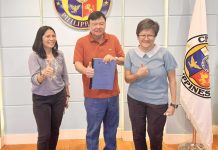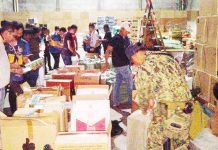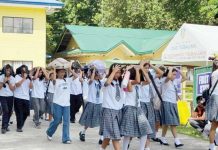
[av_heading tag=’h3′ padding=’10’ heading=’Boracay turning green with algae’ color=” style=’blockquote modern-quote’ custom_font=” size=” subheading_active=’subheading_below’ subheading_size=’15’ custom_class=”]
BY GLENDA SOLOGASTOA
[/av_heading]
[av_textblock size=” font_color=’custom’ color=”]
Wednesday, March 8, 2017
[/av_textblock]
[av_image src=’http://www.panaynews.net/wp-content/uploads/2017/01/front-algae-pic-495×400.jpg’ attachment=’98965′ attachment_size=’portfolio’ align=’center’ styling=” hover=” link=” target=” caption=” font_size=” appearance=” overlay_opacity=’0.4′ overlay_color=’#000000′ overlay_text_color=’#ffffff’ animation=’no-animation’][/av_image]
[av_textblock size=” font_color=” color=”]
ILOILO City – Should tourists fear the algae that turns green the water in some areas of Boracay Island?
An online news site quoted one disappointed tourist: “First time ko talaga dito sa Boracay. Ine-expect ko talagang makita ‘yung blue water. Pero nagulat ako nang makita ko ‘yung lumot…Isang beses lang ako naligo. Hindi na ako bumalik. Personally, tingin ko lang, madumi.”
Boracay is famous for its white sand and pristine waters. But during the months of February to May each year, water in some areas appears green. According to the Boracay Foundation, Inc. this is due to the seasonal bloom of green algae.
Department of Tourism (DOT) regional director Helen Catalbas was careful with her statements when sought for clarification yesterday. Boracay is the country’s top tourist destination and a revenue earner for the government.
“It is the Department of Environment and Natural Resources that has the authority to speak on this concern. This is not my expertise and I don’t want to speculate, give false assurances or false interpretations,” said Catalbas.
The director, however, stressed that Boracay stakeholders are addressing the concern themselves. Resorts and hotels conduct beach cleanups and so, too, are civic organizations and the local government of Malay, Aklan which has jurisdiction over Boracay.
NOT NEW
Catalbas then shared a brochure prepared by the Boracay Foundation, Inc. allaying tourists’ concern over green algae.
“Scientifically, green algal bloom is linked to the high nutrient load of the water. Usually with calm and warm waters, coupled with intense light during summer, these green algae consume excess nutrients from the water and process it for their growth and reproduction. In fact this equates to their proliferation…The presence of these algae is nature’s way of balancing the problem of high nutrient content in the water,” read part of the brochure.
The Boracay Foundation, Inc. also said this phenomenon had been observed by the locals even before the island became a prime destination flocked by tourists and crowded with development.
“Stories of island-grown local residents can attest to the historical recurrence of this algal bloom,” the foundation insisted.
What makes the sand of Boracay powdery and soft to the feet is its organic component called the coralline algae, it added.
Catalbas said DOT has not seen signs that tourist arrivals in Boracay has declined despite the yearly algal phenomenon.
The department recorded 169,843 arrivals in January and 174,183 in February – higher than the 158,701 arrivals in January last year and 173,256 arrivals in February of the same year.
The region’s tourist destinations are safe, stressed Catalbas.
According to the Boracay Foundation, Inc., green algae are a group of algae with bright green pigments produced in its cells.
About 7,000 kinds of green algae can be found in both saltwater and freshwater.
The foundation also quoted Prof. Mark Fran of Philippine Society of Cell Biology saying, “These algae have ecological functions and one of them is by serving as shelter for some juvenile fishes, thus removing it all will result to ecosystem imbalance.”
Meanwhile, a native of Boracay, 92-year-old Lucresia Gelito-Sullano, told the foundation, “Living in Boracay since birth made me witness this presence of algae every summer. There is nothing to be alarmed seeing these algae on the shore. It was even thicker way back then.”
The 69-year-old Mila Yap-Sundad, on the other hand, recalled playing the algae with her friends.
“We wash them using laundry soap then hang them to dry under the sun. The one who produced the whitest was the winner,” said Sundad.
WASTEWATER
Catalbas said she wasn’t sure if untreated wastewater also triggered the presence of the algae.
Some residences and commercial establishments are not connected with the Boracay Island Water Company (BIWC) partially owned by the DOT-Tourism Infrastructure and Enterprise Zone Authority and a private corporation.
Wastewater should first be treated at BIWC’s sewerage treatment plant before it is released to the sea.
“I do not know. I cannot say for sure kun bala ang mga lumot has something to do sa mga wala nag-tap sa BIWC pipes,” said Catalbas.
DENR is in a better position to explain, she said./PN
[/av_textblock]







